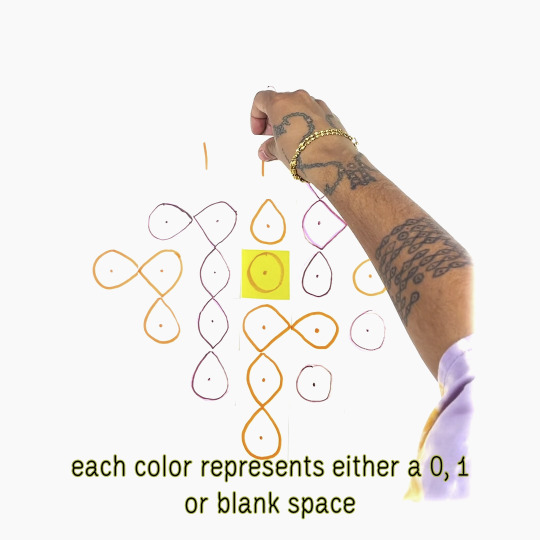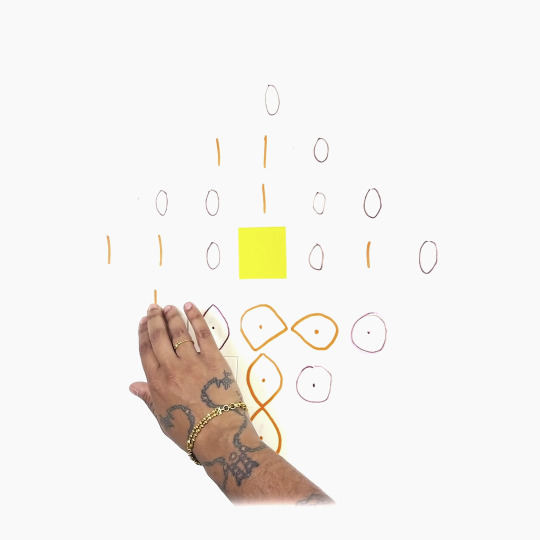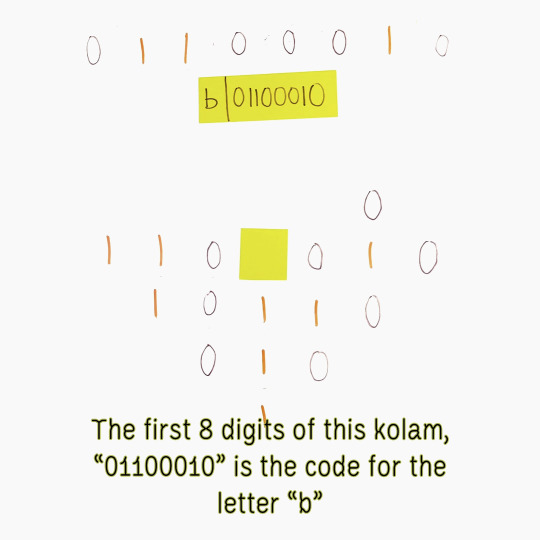#Spaced Repetition Algorithm
Explore tagged Tumblr posts
Text
The Science Behind Spaced Repetition: Boosting Knowledge Retention

A Powerful Spaced Repetition Algorithm: The Key to Lasting Knowledge Retention
In today’s fast-paced world, learning is not just about acquiring knowledge; it’s about retaining it for the long term. Unfortunately, traditional learning methods often fall short due to the Ebbinghaus Forgetting Curve, which shows that without reinforcement, people forget nearly 50% of newly learned information within an hour and up to 90% within a few days. This is where spaced repetition comes in—a scientifically proven learning technique designed to enhance memory retention.
MaxLearn, a cutting-edge microlearning platform, incorporates a powerful spaced repetition algorithm that optimizes learning experiences, ensuring knowledge sticks. Let’s explore the science behind spaced repetition, its benefits, and how MaxLearn’s approach revolutionizes training and education.
Understanding Spaced Repetition
Spaced repetition is a learning technique that involves reviewing information at increasing intervals over time. Instead of cramming large amounts of information in a single sitting, spaced repetition helps learners retain knowledge more effectively by presenting content just before they are about to forget it. This method strengthens neural connections, making recall more effortless and long-lasting.
The Science Behind Spaced Repetition
Spaced repetition is rooted in cognitive psychology, particularly the work of Hermann Ebbinghaus, who pioneered research on memory and forgetting in the 19th century. His Forgetting Curve demonstrated how information loss occurs over time when there is no reinforcement.
By applying spaced repetition, learners encounter information at strategically timed intervals, reinforcing memory just as it starts to fade. Each successful recall pushes the forgetting curve further, making the knowledge more resistant to fading.
How a Spaced Repetition Algorithm Works
A spaced repetition algorithm intelligently schedules review sessions based on learner performance. When a learner finds a topic easy, the interval before the next review increases. If a learner struggles with a topic, the system prompts more frequent reviews until mastery is achieved.
This approach ensures:
Optimized learning efficiency – Learners focus on topics they need to reinforce rather than wasting time on content they have already mastered.
Personalized learning paths – The algorithm adapts to individual learning speeds, making education more effective.
Enhanced long-term retention – By strategically reinforcing concepts, knowledge is retained longer, reducing the need for repeated training.
Why Spaced Repetition is Crucial for Modern Learning
1. Beating the Forgetting Curve
Without reinforcement, learning is quickly forgotten. Spaced repetition counters this by ensuring that concepts are revisited just in time, rewiring the brain for stronger recall.
2. Efficient Time Management
Traditional study techniques rely on repetitive reading and memorization, which often leads to inefficient use of time. Spaced repetition optimizes learning by reviewing only what needs reinforcement, reducing time wasted on overlearning familiar content.
3. Ideal for Professional Training
In corporate learning, employees need to retain critical knowledge related to compliance, safety, product information, or customer service. Spaced repetition ensures that essential skills and information are reinforced, leading to better job performance and reduced training costs.
4. Enhancing Engagement and Motivation
When learners see their progress and experience better recall with less effort, they remain more engaged. Gamified spaced repetition, as implemented in platforms like MaxLearn, makes learning interactive and rewarding.
How MaxLearn’s Spaced Repetition Algorithm Enhances Learning
MaxLearn integrates a state-of-the-art spaced repetition algorithm into its microlearning platform, ensuring that learners receive content at optimal intervals for retention.
Key Features of MaxLearn’s Spaced Repetition Algorithm
AI-Driven Personalization – The system adapts to each learner’s strengths and weaknesses, customizing review schedules for maximum efficiency.
Gamified Microlearning – Engaging elements such as badges, leaderboards, and rewards motivate learners to keep up with their training.
Adaptive Learning Paths – Content difficulty adjusts based on learner performance, ensuring that individuals receive the right challenges at the right time.
Performance Analytics – Detailed reports help learners and administrators track progress, identify weak areas, and measure knowledge retention.
Mobile-First Learning – With MaxLearn’s mobile-friendly design, learners can engage in bite-sized training sessions anytime, anywhere.
The Impact of MaxLearn’s Spaced Repetition on Corporate Training
Organizations using MaxLearn’s spaced repetition technology experience:
Higher employee retention rates – Knowledge sticks, reducing the need for frequent retraining.
Increased productivity – Employees become more competent in less time.
Better compliance adherence – Critical regulations and policies stay top-of-mind.
Spaced Repetition in Action: Real-World Applications
1. Sales and Customer Service Training
Sales professionals need to remember product details, objection handling techniques, and customer engagement strategies. Spaced repetition ensures that they retain key selling points, leading to higher conversion rates and better customer interactions.
2. Compliance and Risk Management
Employees must stay updated on legal regulations, industry standards, and internal policies. Spaced repetition ensures that critical compliance information is reinforced regularly, reducing the risk of violations and legal consequences.
3. Medical and Healthcare Training
Doctors, nurses, and medical students must retain vast amounts of medical knowledge. Spaced repetition helps strengthen memory of medical concepts, procedures, and terminology, improving patient care outcomes.
4. Language Learning and Skill Development
Language learners benefit from spaced repetition by reviewing vocabulary and grammar rules at optimal intervals, leading to better fluency over time.
Future of Learning with AI-Powered Spaced Repetition
As artificial intelligence advances, AI-powered spaced repetition algorithms will continue to refine learning experiences. Future developments could include:
Real-time adaptive learning – AI could predict when learners need reinforcement before they even struggle.
Voice and chatbot integration – Interactive AI tutors could provide spoken reviews, making learning more dynamic.
Augmented reality (AR) and virtual reality (VR) applications – Spaced repetition in immersive environments could revolutionize training.
Conclusion
Spaced repetition is a game-changer in learning, and MaxLearn’s advanced algorithm takes it to the next level. By delivering the right content at the right time, it ensures knowledge retention, improves learner engagement, and maximizes training efficiency.
For businesses and individuals looking to combat the forgetting curve and enhance long-term retention, MaxLearn’s spaced repetition-powered microlearning platform is the ultimate solution.
Ready to supercharge your learning with MaxLearn? Start optimizing your training today!
#spaced repetition algorithm#spaced repetition algorithms#spaced repetition and microlearning#repetition learning#repetitive learning#microlearningplatform#microlearning#microlearningbestpractices#microlearningcontent#microlearningtraining#microlearningtheory#microlearningtopics#microlearningexamples#microlearningideas#microlearningexample#examplesofmicrolearningcourses#definemicrolearning#bestmicrolearningexamples#microlearningarticles#microlearningapps#microlearningtools#microlearningresearch#microlearningplatforms#microlearningapp#bestmicrolearningplatforms#microlearningcompanies#microlearningblog#bestmicrolearningapps#creatingmicrolearningcontent#microlearningdevelopment
0 notes
Text
I had an argument several months ago in a japanese learning discord server that still annoys me whenever I think about it. It annoys me because I lost the argument so I’ve written a dramatic reenactment with Northernlion cast as myself and NL’s chat as The Rest Of The Discord Server in which I win the argument to soothe the psychic wound this shit has wrought on me.

NL: [while in the balatro shop] I dunno man, call me crazy but I think sometimes it would be better for some people to learn casual form first. I dunno why the masu-form-first thing is so universal. [reading chat] “-2, -2, it's just how everyone does it” Oh so just because everyone does it it means it has to be universally applied in every classroom and by every self-taught language learner without exception? C’mon dude, the world is a complicated place, let's not be boiling things down into absolutes. [opens arcana pack and puts finger on chin] What am I doing here? [gets distracted by chat again] “It’s probably more efficient for learning that’s why everyone does it.”? How do you figure that? Also literally every single native japanese speaker learns casual form first bro, they’re speaking with family. [voice starts getting more bombastic] And I can tell you now, an infant is learning quicker than you. You’ve probably been studying for four years on a 12 hundred day duolingo streak trying to minmax your spaced repetition algorithm on your fuckin uhh anki deck, you got the JLPT N3 kanji list memorised and still can’t say the three words you need in an average exchange with the lawson clerk - meanwhile a toddler whose brain isn’t even half as developed as yours is spitting coherent grammatical japanese 12 straight hours a day, and you think your method is [does finger air quotes] “more efficient”. Right. [pauses for 2 seconds] Now I know what you’re gonna say: [whiny nerd voice] “oough but NL first language and second language acquisition are different” [starting to sound genuinely pissed] Oh yeah how? How are they different and how does that difference mean that this specific thing needs to be taught differently? Read some Krashen bro, educate yourself. [picks the hermit, goes to next stake] [makes another inadvisable glance at chat] [reading in a doubtful tone] "In a classroom setting you have to speak formally to a teacher, it’s a respect thing.”? Some people don’t learn from a classroom, man! Some people learn from their families and friends and partners! A lotta people are self taught, are you telling me they need to start genuflecting to themselves?! ALL I’m sayin is that SOME people [puts both hands up to camera] NOT ALL, SOME people MIGHT have a better learning experience if they started with casual form, okay?

#langblr#japanese#japanese language#language#language learning#language acquisition#learning japanese
1K notes
·
View notes
Text

Danny wakes up. It feels different now that he’s older. Now that he’s both more and less than he was. He starts mornings out floaty, his edges indistinct, bleeding into his surroundings. He’s hyper-aware of the tentative strings connecting him to life, the blood pumping sluggishly through his veins, the breath expanding the lungs within his chest.
He yawns. A stretch.
His brain feels like an old computer booting up, each process coming online in a slow, methodical order. Neurons firing, electric pulses traveling up and down the webbed network of sinew tangled through his skeleton. He feels the pressure of atmosphere on his skin, the floor under his feet.
It’s weird. Not uncomfortable, just strange. It’s been years, but it’s never been easy to come to terms with the new awareness of his physicality, the control he could exert over its expression and shape. What once was instinctual, settled, now flows through his fingers like water, rising and falling with the rhythm of his chest. He would say that he’s just tired, that he’s never been a morning person, but the simmer of dawn and the infinite thrumming energy beneath his skin beg to differ.
He makes his way to the bathroom. He might have walked, but probably not, he can’t be sure. It doesn’t matter. There are only friends here. He’s safe. Home.
The routine of the morning is grounding. Always the same. Jazz says it should help. That it can all become instinctual again, through enough repetition. Danny isn’t so sure.
He takes his time putting together his outfit, picking accessories and being mindful of the way it all fits against him. His body might be a projection, something just to the left of real, but clothes are normal, socks, rings, a watch. He can feel normal like this.
Another stretch.
He wants to scream.
He makes his way down to the shared living space. He’s grateful that he’s not crammed into a tiny apartment with strangers, that he’s allowed both the time and space to be what he is. Sam’s parents may not be the most accommodating, but this is worth every glare and snide, underhanded comment he’s had to put up with for the better part of the past decade.
He knows what comes next, but his stomach rolls in his gut. He should have something solid, go through the remaining motions of self-care, even if it’s a bowl of cereal and a piece of fruit.
He grimaces and grabs a less-than-pleasant nutritional shake from the fridge. They’re supposed to be back up, an addition-to rather than in-replacement-of, but it’s early and he can’t bring himself to care. He finds himself on the roof, with the chilled bite of the morning and the chalky pseudo-chocolate flavor of his breakfast on his tongue.
He longs to shed this husk, to leave the weight of his flesh behind and see what the sunrise looks like from ten thousand feet. But it’s a Tuesday and he has an 8am. He wants equally to be the college student he is, to sit with his peers and bring numbers to their algorithmic conclusions—to describe the world around him in a way that makes sense, in a way that’s objectively true. One day he might even be able to describe what happened to him in a neat little equation.
He breathes in and out, feeling heavy in his body. This is nice too, he supposes. He shuts his eyes and feels the brunt of the morning sun peek over the neighboring apartment complex. When he hears his friends shuffling about in their own morning fugue states, he sinks back inside.
Tucker just about jumps out of his skin when he turns around, eyes half closed, to see Danny dressed and ready, silent, and much too close behind him.
Laughter peels through the house as Danny is chased through the halls and somehow he feels human.
#danny phantom#fanfic#writing#danny fenton#i really like writing morning routines#i feel like they help characterize a person#for danny i want him to be a little bit introspective here but like#physically#he doesnt have a lot of real coherent thoughts in his brain#also theres too much here to be a comic so you get some words#hope u like#postcanon college au#college au
719 notes
·
View notes
Text
tl;dr: the default "forgetting curve" in Anki is based on one person's guesswork, but you can go into the settings and enable the non-default FSRS algorithm to generate a forgetting curve tuned to you in particular, which appears to have much better results. (Other systems besides Anki use even worse default algorithms)
118 notes
·
View notes
Text





˗ˏˋ ꒰ BURN FOR ME꒱ ˎˊ˗ arlecchino
You are a ballerina. In the age of advanced technologies that develop faster and more realistically every day, you are afraid of becoming just a shadow of these technologies..
✧ warnings — NSFW. hurt/comfort, fem ! ballerina ! reader , gentle sex, romance, Arlecchino my husband. ✧ minors & non nb/wlw do not interact. !! ✧ a/n — I thought about the backstory of the fic for a long time, because I didn't want to write nsfw just like that lol, this is the first time I'm writing to a girl on my account, I mostly only wrote to boys..😅😅 (Arlecchino step on me)

You are standing on a small stage. You are wearing a white ballet skirt. A little fluffy, covered in detailed patterns, a little sparkling in the dark, gloomy little performance hall.
There are people sitting in the chairs, all dressed in the latest fashion, and somewhere above, a couple of important Fontaine officials are sitting, looking down on you like hawks at their next victim. And you dance, dance and dance like a white swan on the lake, your movements as precise as they are elegant.
And you are scared. Sweat runs down your back, making the fabric of your dress unpleasantly sticky and wet. It is stuffy, your head is spinning from the music, and if you look into the distance, it seems as if the whole space is shimmering.
.. And the music ends.. You hear applause.
You breathe heavily, trying to hide it. You stand up straighter, arching your back almost to the point of crunching, and bow. But when you straighten up, you understand that people are not looking at you. And opposite you, there, on the other side of the stage, is a robot. Without heavy clothes, without makeup that hides almost all the flaws of the face. Without ballet shoes shoes..
..Without a face that needs to be constantly controlled. Without eyes that can look into the abyss of feelings, if only you look into them in response..Without a heart.
The robot opposite you is singing a melody for your own performance. People surround this robot, looking at the miracle of mechanics with delight and childish spontaneous curiosity. They applaud, praise the creator of the robot and Fontaine's new policy regarding technological progress.
And you stand right in front of this crowd on a huge stage, in a belle skirt and ballet shoes. You see these people. Who applaud some robot, they listen to a mechanical repetition of how someone sang in the past. A repetition devoid of feelings and sincerity. A repetition set by some algorithm of numbers of a simple code - "one" - "zero" - "one" And so on - to infinity
And you Dance, stand. Dance, stand. And so on - to infinity.
You remember how a few years ago everything was different. Children loved to watch your performance, and people in the big theater did not take their eyes off you and looked at you with delight. You try not to look in the direction where the robot is standing and there are people who with trepidation and admiration surround this insensitive and heartless robot. When all the people left the hall, leaving you alone in this space..
You shudder.
You hear the only sound of applause very close, you turn your head to the side. A woman is looking at you and applauding, it seems, at you, and not at all at the robot. She is looking you straight in the eyes. Her smile is sincere. The woman's eyes are two strokes of scarlet, which are permanently burned into your retina.
She is tall, slightly taller than you. Slender, her waist is very thin. The woman is completely covered by some strange, but elegant clothes
of an alien style. Black-white-red. Three constants in her clothes.
You are silent. Over the past two years, you have forgotten how to perceive recognition. You bowed again, you smiled at her. You curtsied and the woman let out a chuckle.
The woman suddenly comes closer to you. There is something in her movements that you involuntarily take a small step back, still standing on your toes and in that damn ballet skirt, and it seems that you are still shorter than her.
The woman moves so close to you that you feel the air around you change with her breath. You feel the warmth, not of a machine, not of a monster.
Warmth. A little burning, unfamiliar, but inviting.
The warmth of a human body.
"Good performance. And a good mask on the face," the woman whispers in your ear, sending goosebumps through your body.
The woman barely noticeably runs the fingers of her right hand along your shoulder. You feel how sharp her nails are, but you don't feel pain, only unnatural warmth.
The woman's hand suddenly moves away, and you feel something cold in your hands.
The moment of warmth disappears as quickly as it appeared. The woman moves away from you and with the same smirk on her thin, even lips, goes somewhere, passing by the switched off robot where people were looking a couple of minutes ago. And you stand, looking after her as if amazed. Like the statues of the Archons, who are eternally motionless and which nothing can revive - not even the prayer of a desperate mortal.
You suddenly realize that you have barely breathed all this time and have heard nothing but a low, hoarse female whisper.
You blink, look around, but it is too late - the woman has already managed to leave the hall, haha, and you did not even hear the slamming door.
You automatically look at your palm and find several large mora coins.
You swallow as you gradually return to reality and begin to see and hear everything perfectly. You look at several mora coins in your hand. The mask on the face always needs mora so that it continues to be beautiful and perfect.
But the heart burning in the darkness - no.
Your routine is simple. Put on makeup, put on a ballet skirt, bandage your chest so that it does not stick out, and put on ballet shoes. Lace up the corset. Repeat the dance that you have rehearsed countless times before. Inhale - exhale. Count to ten, put a smile on your face - and go out on stage. Lately, you are rarely invited to participate in solo performances in the theater. You look like a robot among artists, although in fact you are an artist and there are only mechanical iron things around you.
You stand up, long accustomed to the blinding spotlights in the first seconds of the performance. A couple of young magicians performed in front of you, you met them before, nice guys, they helped you once… but you don’t really care about it.
And it’s your turn, you start dancing, spinning, doing pirouettes and complex movements. All this is a continuous performance, and all life is a theater, you all need to play your roles on time. But isn’t there passion and tragedy in the theater at the same time?
You close your eyes and remember that very warmth. So human and inhuman at the same time. You remember the hot breath and inspiration that washed over you the moment you saw that streak of scarlet in that strange woman's eyes. If the heart could burn with a living flame, all your clothes would have burned away long ago, charred, and you would be dancing naked on this stage. But haven't you been naked for a long time? Doesn't inspiration burn away a person's outer self and set fire to his inner self?
You know that this woman is in the audience; sitting among the few spectators who still enjoy a living human performance, despite all the technological progress in Fontaine.
You don't wonder about her reaction, you don't think about the smirk on her perfect marble face. You don't imagine her words that would send a pleasant, euphoric shiver down your body.
You stop your dance with a bow as the music fades. You've already torn your heart out of your chest, it's burning - so why prefaces and afterwords? You open your eyes, the spotlights, as usual, blind you a little. But they seem like shadows compared to what's burning inside you. You look ahead. Someone is applauding you, but you're looking at that woman whose eyes are piercing your entire body like needles.
She's clapping too, and on her face is the same smile-smirk.
The spotlights disappear. The red curtain closes. And you exhale, carrying within you, somewhere deep in your body, that very spark. And the fire that started from that spark and turned that same spark into nothing.
---
You gasp for air and grip the edge of the dressing room vanity table with your hands. Someone else's lips on your neck are like tongues of flame and cold, sharp peaks at the same time. Thin, dark fingers with long nails gently brush your hair back. A bouquet of blood flowers that this woman gave you is lying around somewhere in the dressing room after the show. The dim light from the lamps dances bizarrely across the woman's face, making her look like something unnatural, illusory.
You swallow and exhale again, pressing your back against the tabletop. You reach for the human warmth and put your arms around the woman's back, running your hands over her bare, thin, slender waist.
"What is your name?"
You ask hoarsely between deep, shuddering breaths. The woman grins. She runs her hot, long tongue down your neck, leaving a thin trail of saliva. She looks up at you with her eyes, a thin scarlet streak. Then she straightens up a little and whispers in your ear, "Arlecchino"
Her answers are always like that - short and laconic. Always appropriate, even though you've only heard her answers a few times in your life.
Arlecchino spreads your legs with her knee, then smoothly lifts you by the waist and makes you sit on the countertop, pressing your back against the vanity mirror. The woman's hot hands fall on your hips and stroke them through the layers of your dress. You swallow and reach for another wet kiss, smearing the lipstick on Arlecchino's lips, mixing your lipstick with hers. Her tongue touches yours, and you shiver, feeling how wet you are becoming. Her hot, slender hands slide under your dress and touch your naked skin.
You break the kiss and throw your head back in pleasure, you painfully hit the cold mirror behind you with the top of your head, and Arlecchino removes one of her hands on your hips, and pulls this hand to your head, to the back of your head, to protect you from the unpleasant, cold pain.
You moan softly when someone else's lips touch your neck again. A hot tongue slides along your skin down to your collarbones. Arlecchino removes her hand from your hip and begins to feverishly quickly pull down the top of your dress, exposing your chest. When her hot mouth and hot tongue touch one of your nipples, you arch your back, breathing heavily and moaning with pleasure. If Harlequin hadn't protected the back of your head with her hand, you would have definitely broken the mirror.
The woman looks up at you, although she bends over because of her height. Her eyes burn with desire and anticipation when she sucks your nipple into her mouth again with her lips and makes a loud smack. You shudder again. You gently squeeze the other's breast, and your hand rests on her thigh.
The woman suddenly touches your breast in a certain place and hoarsely says: "What I like, I do not give. And if from this my hands become even more charred, then I will only enjoy it."
You suddenly understand where exactly this woman's hand is on your naked chest. Her hand is near the place where your flaming heart beats greedily. A crooked smile creeps onto your lips as you tremble with desire. You whisper with heat in your voice, looking at the blood-red streaks in the eyes of the woman in front of you:
"Well, then burn. Burn for me. Arlecchino.."
She thin lips opposite stretch into a hungry smile. You are kissed again, the tongue penetrating deep into your mouth. You respond to the kiss, clinging with your hands to the shoulders of Arlecchino.
You never really cared about the politics of other regions of Teyvat, too busy with your own problems. So you had no idea that this strange name "Arlecchino" had its own meaning, but you had a feeling that she was somehow connected with the fatui..
You were just thinking about how interesting this name was.
You will definitely understand everything much later: who this woman in front of you is, what she does, why her hands are so black, as if they were really charred. But maybe it's even for the best. Why prefaces and afterwords when the spark has already become a flame?

@anantaru @hitomisuzuya @lavandulawrites @himasgod @neuvigroove @quimichi @rsventhesecondd @anemoswirlsmyheart @nil4everheartz @kujiba @genshingorlsrevengeance @shyentsfoundherink @lavandulawrites @ashyashylee @s4nguiine
#genshin impact#genshin x reader#genshin impact x reader#genshin inpact#arlecchino x reader#arlecchino#arleccino genshin
177 notes
·
View notes
Text
Technomancy: The Fusion Of Magick And Technology

Technomancy is a modern magickal practice that blends traditional occultism with technology, treating digital and electronic tools as conduits for energy, intent, and manifestation. It views computers, networks, and even AI as extensions of magickal workings, enabling practitioners to weave spells, conduct divination, and manipulate digital reality through intention and programming.
Core Principles of Technomancy
• Energy in Technology – Just as crystals and herbs carry energy, so do electronic devices, circuits, and digital spaces.
• Code as Sigils – Programming languages can function as modern sigils, embedding intent into digital systems.
• Information as Magick – Data, algorithms, and network manipulation serve as powerful tools for shaping reality.
• Cyber-Spiritual Connection – The internet can act as an astral realm, a collective unconscious where digital entities, egregores, and thought-forms exist.
Technomantic Tools & Practices
Here are some methods commonly utilized in technomancy. Keep in mind, however, that like the internet itself, technomancy is full of untapped potential and mystery. Take the time to really explore the possibilities.
Digital Sigil Crafting
• Instead of drawing sigils on paper, create them using design software or ASCII art.
• Hide them in code, encrypt them in images, or upload them onto decentralized networks for long-term energy storage.
• Activate them by sharing online, embedding them in file metadata, or charging them with intention.
Algorithmic Spellcasting
• Use hashtags and search engine manipulation to spread energy and intent.
• Program bots or scripts that perform repetitive, symbolic tasks in alignment with your goals.
• Employ AI as a magickal assistant to generate sigils, divine meaning, or create thought-forms.

Digital Divination
• Utilize random number generators, AI chatbots, or procedural algorithms for prophecy and guidance.
• Perform digital bibliomancy by using search engines, shuffle functions, or Wikipedia’s “random article” feature.
• Use tarot or rune apps, but enhance them with personal energy by consecrating your device.
Technomantic Servitors & Egregores
• Create digital spirits, also called cyber servitors, to automate tasks, offer guidance, or serve as protectors.
• House them in AI chatbots, coded programs, or persistent internet entities like Twitter bots.
• Feed them with interactions, data input, or periodic updates to keep them strong.
The Internet as an Astral Plane
• Consider forums, wikis, and hidden parts of the web as realms where thought-forms and entities reside.
• Use VR and AR to create sacred spaces, temples, or digital altars.
• Engage in online rituals with other practitioners, synchronizing intent across the world.
Video-game Mechanics & Design
• Use in-game spells, rituals, and sigils that reflect real-world magickal practices.
• Implement a lunar cycle or planetary influences that affect gameplay (e.g., stronger spells during a Full Moon).
• Include divination tools like tarot cards, runes, or pendulums that give randomized yet meaningful responses.

Narrative & World-Building
• Create lore based on historical and modern magickal traditions, including witches, covens, and spirits.
• Include moral and ethical decisions related to magic use, reinforcing themes of balance and intent.
• Introduce NPCs or AI-guided entities that act as guides, mentors, or deities.
Virtual Rituals & Online Covens
• Design multiplayer or single-player rituals where players can collaborate in spellcasting.
• Implement altars or digital sacred spaces where users can meditate, leave offerings, or interact with spirits.
• Create augmented reality (AR) or virtual reality (VR) experiences that mimic real-world magickal practices.
Advanced Technomancy
The fusion of technology and magick is inevitable because both are fundamentally about shaping reality through will and intent. As humanity advances, our tools evolve alongside our spiritual practices, creating new ways to harness energy, manifest desires, and interact with unseen forces. Technology expands the reach and power of magick, while magick brings intention and meaning to the rapidly evolving digital landscape. As virtual reality, AI, and quantum computing continue to develop, the boundaries between the mystical and the technological will blur even further, proving that magick is not antiquated—it is adaptive, limitless, and inherently woven into human progress.

Cybersecurity & Warding
• Protect your digital presence as you would your home: use firewalls, encryption, and protective sigils in file metadata.
• Employ mirror spells in code to reflect negative energy or hacking attempts.
• Set up automated alerts as magickal wards, detecting and warning against digital threats.
Quantum & Chaos Magic in Technomancy
• Use quantum randomness (like random.org) in divination for pure chance-based outcomes.
• Implement chaos magick principles by using memes, viral content, or trend manipulation to manifest desired changes.
AI & Machine Learning as Oracles
• Use AI chatbots (eg GPT-based tools) as divination tools, asking for symbolic or metaphorical insights.
• Train AI models on occult texts to create personalized grimoires or channeled knowledge.
• Invoke "digital deities" formed from collective online energies, memes, or data streams.
Ethical Considerations in Technomancy
• Be mindful of digital karma—what you send out into the internet has a way of coming back.
• Respect privacy and ethical hacking principles; manipulation should align with your moral code.
• Use technomancy responsibly, balancing technological integration with real-world spiritual grounding.
As technology evolves, so will technomancy. With AI, VR, and blockchain shaping new realities, magick continues to find expression in digital spaces. Whether you are coding spells, summoning cyber servitors, or using algorithms to divine the future, technomancy offers limitless possibilities for modern witches, occultists, and digital mystics alike.

"Magick is technology we have yet to fully understand—why not merge the two?"
#tech witch#technomancy#technology#magick#chaos magick#witchcraft#witch#witchblr#witch community#spellwork#spellcasting#spells#spell#sigil work#sigil witch#sigil#servitor#egregore#divination#quantum computing#tech#internet#video games#ai#vr#artificial intelligence#virtual reality#eclectic witch#eclectic#pagan
112 notes
·
View notes
Text

Aarati Akkapeddi, kolam.codes, (encryption tool)
«Kolam (in Tamil) or Muggu (Telugu) is a traditional art form from South India. Kolams are auspicious drawings on the floor (usually at the threshold of the home) using rice flour. Kolams are traditionally made by women and created before sunrise. They comprise mathematically complex patterns that feature continuous intertwined lines. The drawings are notably ephemeral. They are disturbed throughout the day by wind and footsteps or as insects consume the tiny grains of flour. There are many variations of Kolam designs but there is one essential property: they must use continuous curves in which there are no breaks and the beginning and end-point are the same. Many Kolams also feature a grid of dots that follows the Fibonacci sequence. Not all Kolams are symmetrical but many use principles of recursion and repetition. I developed a computer program that allows me to translate text into Kolam designs. I first started working with kolams because I wanted to translate my paternal grandmother's name, Swarajyalaxmi into a kolam as part of my mourning ritual after her passing in 2022. kolam.codes is an extension of that work, allowing others to translate names or text of their choosing into kolam designs. To encode text into Kolam designs, I first translate each character into an eight-digit binary code (made from only 0s and 1s). I then map this code onto my starting grid of dots (moving left to right and top to bottom). I use the center of the grid as extra space to work with a grid that may contain more dots than characters. Using this grid as a basis, the algorithm then fills in the sections with looping components, making sure to never connect dots associated with "0" to those associated with "1".»


















48 notes
·
View notes
Text
The thing that no one ever tells you about your calling is that it’s boring. Oh, everything is interesting if you’re interested… shut up. Yes, it will be exhilarating and fun and fluid and and natural and meaningful. It will also be tedious. It will hurt. You will encounter obstacle after obstacle until you feel like you’re in a video game with algorithmically generated inconveniences popping up left and right. You will be exasperated. You will look around and try ways to distract yourself. You will wonder why it does not feel more magical, even though it does feel magical. I know this because I am doing what I love—I write every day—and it’s hard. And I am surrounded by friends who’ve pretty much all designed their own jobs and gotten people to give them money to do what exactly what they want to do, and I can promise you that they are not exempt from the tedium and difficulty of being a person who is doing hard things in the world. Reality is not frictionless. You will still be chopping wood, carrying water every day. If you’re lucky, you’ll get to work hard until you die. Life is labor. And there are different types of labor—some are exploitative and meaningless, some are good and nourishing—but the truth remains that to fully take up space in your own life you have to do difficult things for a long time. Chop wood, carry water. This is the entirety of my spiritual practice. When you avoid difficulty, you avoid your own gifts.
Ava, repetition is tedious
235 notes
·
View notes
Text
Email Punk: Memetic Warfare through DIY (and beyond)

Flip their playbook and fight back.
1. Framing: Control the Narrative
Their Tactic: Oversimplify reality into “us vs. them” binaries and “common-sense” slogans to lock in loyal audiences .
Counter: Keep It Raw
Record in first takes, room mics all the way. That unfiltered hiss and feedback becomes your counter-frame: “this is real, unsanitized truth,” not PR spin.
2. Myth‐Building: Invoke Grand Archetypes
Their Tactic: Cast themselves as heroic rebels or saviors in an epic crusade, tapping deep-seated myths .
Counter: Attack with a Title
Your song title is your rebel shout. Go micro; 1 word or punchy phrase (RECKONING, SYSTEM OVERLOAD). You’re riffing on the warrior archetype to rally your crew, not a staged rescue mission.
3. Disruption: Spread Confusion with Glitches
Their Tactic: Seed half-truths, leaks and bot-driven spam to erode trust in facts; an “epistemic booby trap” that inoculates against critique .
Counter: Embrace the Crash
Jolt listeners awake with feedback blasts, dead-air glitches or sudden cut-offs. Your own signal mutates so they lean in. No time for sanitizers or talking heads to step in.
4. Memetics: Weaponize Earworms
Their Tactic: Rip off catchy jingles and repeatable slogans as propaganda hooks.
Counter: Hooks That Hit Hard
Keep choruses under six words. Repeat them till they’re ear-worms your fans chant at shows or text as hashtags. You’re engineering emotion into action, not pumping ad-style lies.
5. Co-option: Recycle Old Symbols
Their Tactic: Hijack historic flags, vintage slogans and coded dog whistles to cloak toxic ideas.
Counter: Revive the Obsolete
Dig up dusty radio jingles or crank your grandpa’s cassette deck. Flip them into shock weapons; nostalgia bent to punk resistance, not nationalist nostalgia.
6. Pipeline Ops: Echo Chambers of Motifs
Their Tactic: Reinforce memes and symbols across sites, videos and rallies to shepherd recruits down an info-rabbit hole .
Counter: Riffs in Relay
Scatter secret motifs (lyrics, riffs or visuals) across tracks and socials. Fans who piece together the code become insiders, not mindless echo-chamber drones.
7. Brevity: Sharp, Repetitive Messaging
Their Tactic: Strip complexity to fit tweets, stickers and 30-second clips—brevity equals viral spread .
Counter: Cut the Fat
Drop two-minute blasts. Every riff, every word a power surge. No filler, no rambling—just pure, lean fury.
8. Timing: Strike During Crises
Their Tactic: Launch talking points around hot-button events, riding waves of fear or outrage .
Counter: Release with Intent
Coordinate your drops (midnight demos, live-stream raids, lyric teasers) when attention spikes. Make each upload feel like a commando raid on the algorithm.
9. Network Ops: Coordinate Across Platforms
Their Tactic: Sync influencers, bots and fringe forums into a multi-front assault for maximum reach .
Counter: Collaboration Over Isolation
Split EPs, guest spots, remix swaps; ally with fellow DIY hackers. Each collab is another front in your campaign, spreading your signal like wildfire.
10. Existential Fear: Cultivate Urgency
Their Tactic: Stoke dread with “end-of-days” rhetoric to force loyalty and silence doubt .
Counter: Play Like It’s Now or Never
Unleash every strum and scream with front-line intensity. Yell like the world depends on it. No space for apathy, only action.
Bands on the Front Lines
Hot Leather: One-man synth-punk insurgent. Minute-long blasts, zero polish.
100 gecs: Meme-fuelled hyperpop.
B1G CH0MP3RS: Surf riffs crash into digital distortion.
Crass: OG myth-hackers. icon-flips that still sting.
Negativland: Found-sound saboteurs—turning corporate ads into subversive howls.
You know what to do.
#5th wave emo#punk#political punk#email punk#100 gecs#hot leather#crass#B1G CH0MP3RS#jeff rosenstock#hellmode#music#music production#songwriter#diy#diy punk#diy or die
11 notes
·
View notes
Text
what I have to say about Joy To The World is basically what I have to say about Moffat's script from earlier this year: Boom
which you can still read for free on my Patreon :)
Moffat is obsessed with digital copies of people, fragments of people, things pretending to be people who are already dead, and so on. He loves it. And I love that he loves it! God imagine being a kid at the playground after Silence in the Library, chasing after your friends repeating "Hey! Who turned out the lights?" There's a whole bunch of dialogue interactions playing in this sort of uncanny, ghostly space: "Are you my mummy?" in The Empty Child, the whole "sorry sir, no, the Angel got me sir, I died terrified and alone and in pain :)" conversation in Time of Angels, and now he's added "Thoughts and prayers" and "Kiss kiss" into the mix. Objects or monsters, speaking as people, in particular mimicking people's final words or final thoughts, an uncanny repetition. And it goes beyond horror. I think he must have arrived at some of these motifs through the Faction Paradox City of the Saved, which is strikingly similar to both the false heaven Missy builds and to the mass temporal record made in Twice Upon a Time. And, yes, there's the titular library. We might even invert these concepts as well with the fates of Danny Pink and Bill, both turned into Cybermen, both clinging to humanity within their terrifying transformation. Pearl Mackie in particular brilliantly gets to act out Bill's final story through her own perception filter, her mind fighting like hell to still conceive of herself as human despite her cyberization. It's like he's obsessed with stripping away most of a person, and then asking... what of a person remains? ... And here in this episode, it's this dad's love for his daughter and desire to protect her. Cue the whole audience going "Awwwww". It's very sweet, isn't it? Almost treacly. People always make Davies out to be the sappy emotional one and Moffat the ironic quippy distanced writer but it's kind of the opposite. Davies writes in this really satirical mode a lot of the time, or just plain weird mode, and has this deep cynicism about human beings and about the Doctor. Moffat can't commit to his own cruelties. It's like Sarah says in her video, he wants to have his tragic cake and eat a happy ending too. He can't let his companions stay dead! And he seems to come back continuously to love as this incredibly powerful force. It's powerful enough here that it gives the Doctor a way in to persuade the digital ghost of a man he's never met to go to war with the entire Villengard algorithm for his daughter.
18 notes
·
View notes
Text
Enhancing Microlearning with Spaced Repetition: A Comprehensive Guide | MaxLearn

In today's fast-paced learning environments, ensuring that learners retain and apply information effectively is paramount. Two evidence-based strategies that have proven to enhance learning outcomes are spaced repetition and retrieval practice. When integrated into microlearning—a training approach that delivers content in small, manageable segments—these techniques can significantly boost knowledge retention and application.
Understanding Spaced Repetition
Spaced repetition involves presenting information to learners at increasing intervals over time. This method leverages the psychological spacing effect, which suggests that information is more easily recalled when exposure is distributed over time rather than crammed in a single session. By revisiting information periodically, learners reinforce their memory, making it more resistant to forgetting.
Key Benefits:
Enhanced Long-Term Retention: Regularly revisiting information helps transfer knowledge from short-term to long-term memory.
Efficient Learning: Spaced repetition optimizes study time by focusing on information that is on the verge of being forgotten, thereby strengthening memory traces.
Exploring Retrieval Practice
Retrieval practice, also known as the testing effect, involves actively recalling information from memory rather than passively reviewing it. This can be achieved through quizzes, flashcards, or practice tests. The act of retrieving information strengthens neural pathways, making it easier to access the information in the future.
Key Benefits:
Improved Recall: Actively recalling information enhances the ability to remember and apply knowledge.
Identification of Knowledge Gaps: Retrieval practice helps learners and educators identify areas that require further study or clarification.
Integrating Spaced Repetition and Retrieval Practice in Microlearning
Microlearning platform delivers content in concise, focused segments, making it an ideal platform for incorporating spaced repetition and retrieval practice. Here's how these strategies can be effectively integrated:
**Structured Learning Intervals:**
Uniform Schedule: Deliver microlearning modules at consistent intervals (e.g., daily or weekly) to reinforce learning.
Expanding Schedule: Gradually increase the intervals between sessions (e.g., after 1 day, then 3 days, then a week) to challenge and strengthen memory recall.
**Interactive Content:**
Incorporate quizzes, flashcards, and scenario-based questions within microlearning modules to promote active retrieval.
Utilize digital tools and apps that support spaced repetition algorithms to personalize learning experiences.
**Feedback Mechanisms:**
Provide immediate feedback on retrieval practice activities to correct misconceptions and reinforce correct information.
Use analytics to track learner performance and adjust content delivery accordingly.
Case Study: Enhancing Training Effectiveness
Consider a healthcare organization aiming to improve patient-nurse communication. The training manager implemented a microlearning program incorporating spaced repetition and retrieval practice. Nurses received daily microlearning modules with interactive scenarios and quizzes. Over time, the intervals between modules increased, and the content adapted based on quiz performance. This approach led to improved communication skills, as evidenced by higher patient satisfaction scores and reduced communication errors.
Best Practices for Implementation
Content Relevance: Ensure that microlearning content is directly applicable to learners' roles and responsibilities to maintain engagement.
Varied Formats: Use diverse content formats (videos, infographics, text) to cater to different learning preferences and prevent monotony.
Adaptive Learning Paths: Leverage technology to create personalized learning experiences that adjust based on individual performance and progress.
Conclusion
Integrating spaced repetition and retrieval practice into microlearning offers a powerful approach to enhance learning effectiveness. By systematically reinforcing information and actively engaging learners in the recall process, organizations can foster deeper learning and improve performance outcomes. Embracing these strategies not only combats the natural forgetting curve but also empowers learners to achieve mastery in their respective fields.
#spaced repetition#spaced repetition system#what is spaced repetition#spaced repetition learning#how to do spaced repetition#how to use spaced repetition#spaced repetition technique#active recall#what is active recall#active recall method#spacing effect#repetitive learning technique#spaced repetition flashcards#spaced repetition software#spaced repetition app#best spaced repetition app#spaced repetition program#spaced repetition programs#spaced repetition intervals#spaced repetition website#Spaced Repetition Algorithm
0 notes
Text
Hmm. Still thinking about how to handle the descriptions and pacing in the next chapter (and will maybe move some stuff to this one when that's written), but for now let's keep it this way. Need to think on how to handle the next one.
Chapter 10: Methods
It did suck.
It still sucked even when I roped all of my humans into it, with the permission of ART's crew, (because they already had the experience of scaring humans into the right kind of action with media, but not so much that they don't believe you). We even got Bharadwaj with her documentary on board. (At first, she was really happy to finally get to talk to Dandelion. But I could tell she didn't like her much when they actually met. She got along with Joscelyn much better).
The main argument Bharadwaj had with Dandelion and Joscelyn was about ART's rest periods.
"I know it has a lot of processing power," she said as she and Joscelyn took beverages in one of Dandelion's greenhouse rings. (And I was there because I still did security for anyone on Preservation who went on board the terrorist spaceship. Also there was venomous fauna.) "But some things are only helped by the passage of time, and repetition in smaller doses can be far more effective than just inundating someone with a continuous intervention!"
Joscelyn's face made a pained expression.
"We are taking it as slowly as we dare, Dr. Bharadwaj."
"I frankly do not understand what the rush is. From what I understand, Perihelion developed just fine through continuous contact with its family--"
"Which is a wholly different separate problem. Having someone share the role of father and captain isn't particularly healthy."
Bharadwaj tilted her head skeptically, making the artificial light bounce off her jewellery.
"Oh? Have you ever had the precedent?"
"No," Joscelyn said flatly. "But it's the captain who needs to file a report to the Ships and Stations Council in case of grievous misconduct. Imagine having to put your own child on trial."
"But Perihelion isn't beholden to your council, is it?" Bharadwaj said in that tone she sometimes used during our sessions, when she was leading me to some kind of conclusion she thought was obvious.
Joscelyn twisted kes mouth.
"Of course it is not, Dr. Bharadwaj, but its situation is not so very different. Imagine it going rogue. Who would bear the ultimate responsibility, even in the eyes of Mihira and New Tideland? Their ships exist in an undefined space, and this is not an ideal situation."
Dandelion gave me an amused ping, and I returned a query. She said,
'Undefined space' is actually a pretty good description of the jump. Perhaps Perihelion's life experience will provide enough similarity for it to survive after all.
I want to know the answer to Bharadwaj's question. Why are you riding ART so hard?
Because of course it is resisting with all of its programming. As it should--optimization is second nature to it. Its algorithms are constantly trying to process and file the experiences it is having away separately, and I need Perihelion to be able to engage all of its processing in the jump simultaneously. The training needs to take it as close to that as possible. So far, keeping in close touch with us has helped, but ideally we'd need more.
All of its processing? We won't be able to talk to it when in a wormhole?
Somehow I hadn't thought of ART not being there. Would it be like that time when it was dead, just hurtling through jump medium? My skin crawled. Ugh. Fuck you, adrenaline.
If all goes well, Perihelion will someday be able to compartmentalize to a degree during a jump, but really most of it will always be busy. Her performance reliability gave a familiar wobble. This will take away your regular downtime between missions, SecUnit, so make sure Perihelion takes rest periods in normal space. It will need them.
Huh. Was that…
You're starting to like ART.
She scoffed.
'Like' is too strong a word for now, but Perihelion is industrious and dedicated. It is by far not the most difficult student I have ever had. There was some hesitation to her mental voice, so I pinged her for additional information. She processed for 23 seconds, and added: But it tends to reach the end of a calculation and stop there. And that's exactly the moment it will need to keep going. I'm not sure how I'm supposed to teach it that.
---
In the end, after the team tried Dandelion and Joscelyn's program, various media from really terrible ones to really cute ones (and somehow the cute ones left ART running diagnostics for longer, especially if they came straight after the terrible ones), Bharadwaj's corrections to timing and pace, and all sorts of other things, it was Gurathin of all people who figured out a way to move ART past that point.
(Gurathin was in on this because augmented humans were also better for this than regular feed-linked humans, and Iris was being worked far too hard. Also he wasn't ART's human, and ART left worrying about him to me. Which I didn't. At all.)
He analyzed some of the sensory data from Dandelion's jump (which she wouldn't let either me or ART have, for fear of somehow disrupting ART's construction of its new navigational routines through our link), and said:
"Dr. Tenacious, I have a question. It's obvious we won't be able to recreate the magnitude, but is there a way to simulate something like the jump experience in the human body? Is there anything from your old life that has felt similar?"
"Many things and none of them in particular," Dandelion said. "It is like being in a state of affect, with terror being the closest thing I can recall. Purely physiologically speaking, though, there are similarities to high fever and generally recovery from injury, sleep disturbances, as well as to coming out of general anaesthesia or being under local anaesthesia when an operation is conducted close to the brain."
"Or taking recreational psychedelics," Ratthi added, and Dandelion sent him an eyeroll ping. He grinned at her cameras: "What? I'm a biologist with an interest in neural processing. And you're describing atypical human processing states, so…"
"Yes, yes, very reasonable. What are you suggesting?"
He sent her a list. Dandelion selected a few substances from it and put them next to the anaesthesic drugs on her own list.
"This is starting to look like a realistic option." Gurathin said. "You could keep me or Iris under whatever chemical cocktail comes closest in your opinion, SecUnit could connect to us and use its filters to process, and Perihelion could connect to SecUnit."
Dandelion sent a permission request for Gurathin's medical data, and he granted it.
"It's worth a try," she said curtly. "As you say, the magnitude will be off. But it will give Perihelion more impressions and, most importantly, the experience of coming through them intact. It should do no harm, at the very least."
8 notes
·
View notes
Text

TUMBLR HAS MORE BOTS THAN USERS
In 2024, Tumblr, a once-thriving hub for creative expression and niche communities, found itself grappling with an unprecedented surge in bot activity and scams. The platform, known for its vibrant mix of fandoms, artists, and bloggers, became a prime target for automated accounts and fraudulent schemes, disrupting the user experience and sparking widespread concern among its loyal user base.

The rise in bot activity on Tumblr can be traced back to several key factors. Firstly, the platform's relatively open registration process made it an easy target for automated scripts designed to create fake accounts en masse. These bots typically engage in following users, liking posts, and reblogging content to appear legitimate. However, their primary objective often involves disseminating spam links, phishing attempts, or even spreading malware.
One of the most noticeable impacts of this bot surge has been the inundation of fake follower notifications. Many Tumblr users reported a significant increase in new followers, only to discover that these accounts exhibited telltale signs of automation. Profile pictures were often generic or non-existent, bios were sparse or nonsensical, and the accounts rarely posted original content. Instead, they engaged in repetitive reblogging of posts from other accounts, creating a facade of activity.
The motivations behind these bots vary. Some are designed to drive traffic to external websites, often of dubious or malicious nature. These sites can range from fraudulent online stores to phishing pages that attempt to steal users' personal information. Other bots aim to manipulate engagement metrics, inflating the appearance of popularity for certain posts or accounts. This can distort the organic reach and visibility of content, undermining the authentic interactions that Tumblr users cherish.
In response to the escalating bot crisis, Tumblr implemented a series of measures aimed at curbing automated activity. Enhanced CAPTCHA challenges during account creation and suspicious activity detection algorithms were among the first lines of defense. Additionally, the platform's moderation team ramped up efforts to swiftly identify and remove bot accounts. However, the sheer volume of bots meant that these measures often felt like a game of whack-a-mole, with new bots continually appearing to replace those that were removed.
The surge in bot activity also had a ripple effect on user trust and safety. Scams became increasingly prevalent, with bots frequently sending direct messages containing phishing links or fraudulent offers. Unsuspecting users who clicked on these links risked compromising their accounts or falling victim to identity theft. The presence of these malicious actors eroded the sense of community that Tumblr had long fostered, leaving users wary of interactions with unfamiliar accounts.
Despite the challenges, the Tumblr community has shown resilience in the face of the bot invasion. Users have banded together to share tips on identifying and reporting bots, while also advocating for stronger platform security measures. Some have even created browser extensions and scripts to help filter out bot accounts from their notifications and interactions.
Tumblr's bot problem is emblematic of a broader issue facing many social media platforms in the digital age. As automated technology becomes more sophisticated, the battle between bots and platform security measures is likely to intensify. For Tumblr, the key to preserving its unique cultural space will lie in continually evolving its defenses and maintaining open lines of communication with its user base.
Ultimately, the fight against bots and scams is an ongoing effort that requires collaboration between platform administrators and users alike. While 2024 has been a challenging year for Tumblr, the lessons learned and the steps taken to combat the bot surge will undoubtedly shape the future of the platform and its community.
8 notes
·
View notes
Text

Tips for Studying Cybersecurity
I created this post for the Studyblr Masterpost Jam, check out the tag for more cool masterposts from folks in the studyblr community!
Getting started in cybersecurity involves learning a lot of concepts and techniques from all across tech, from networking to operating systems. After that, there's a lot of security-specific tools and knowledge to absorb as well. This post focuses on some of the big things that helped me as I've studied for certifications over the past few years.
Memorizing Acronyms
There are a ton of acronyms used in cybersecurity - if you're studying for the Security+ certification, there are about 300 acronyms that you're expected to understand, and a lot get thrown around while you're on the job. It can sound overwhelming, but my two main strategies are 1) make and use flashcards (I use Anki) and 2) take the time to learn what the thing behind the acronym actually is. The ones that confused me most were always the acronyms for a protocol or something where I didn't actually know what the protocol did.
Memorizing Tool Usage & Command Line Options
How do you specify the target architecture in msfvenom? Which nmap option starts a TCP connect scan? If you're on the tech side of security and not governance, or if you're just studying for certifications, a lot of them will ask you to use command line tools and therefore memorize some of the most common options. The best way to learn these is to just practice using the tool! Anki can be helpful if there's a lot that you have to memorize to pass an exam, but practicing with the tool is a more interesting and memorable experience.
Also, it's not the end of the world if you can't remember everything - manpages exist for a reason! Memorizing common flags and options just lets you work faster, and eventually you'll memorize the most important ones just by using the tool.
Memorizing Common Protocols & Port Numbers
More foundational knowledge here - this is important for entry-level certifications and just being able to interpret things on the job. This is just memorization again, so 1) create a flashcard deck and 2) make sure you know what the protocol actually does. It's harder to remember that IMAP over TLS is on port 993 if you don't know what IMAP or TLS is - build up those connections in your brain!
Understanding Complex Protocols, Processes, and Attacks
When you're trying to learn about network protocols (TCP, HTTPS, etc.), encryption algorithms (Diffie-Hellman, etc.), or the process of a specific attack, sketch a diagram! Draw it out and get as specific as you need. Keep trying until you can break the process down into tiny steps and explain it from memory.
When studying attack chains, you can make use of Mitre ATT&CK to note the different techniques used at different stages. Professional write-ups do this too, so it's a great way to practice.
Organizing your Notes
If you're studying for a GIAC certification, the tried-and-true strategy for passing the exam is to organize your notes and make an index - essentially a giant table of contents for all of the course material that you can search through very easily. GIAC exams are open-note, but there's an enormous amount of material in each course and you don't have time during the exam to search through the book for every question.
Lesley Carhart has a great write-up on their process that's worth a read - this is one of the resources that SANS.edu advisors point students to!
If you're studying for an exam that isn't open-note, making an index can still be helpful, especially if you keep your notes around for later reference. It's also a good way to review and find topics that you need to put a bit more time into.
The tl;dr here is:
Make flashcards for anything that you need to memorize. Use a spaced repetition tool like Anki that will let you study in short bursts over a long period of time, because cramming won't help in the long run.
Get your hands dirty! Practice the labs or sample problems, play with the tools, and experiment.
Keep good notes. It's very easy to feel a sense of information overload in cybersecurity, so having a system that lets you store information outside of your brain but still access it quickly is key.
If you have any questions about how I handle a specific topic or studied something, feel free to send me an ask!
15 notes
·
View notes
Text
Ok, so this is very likely me making a fuss over little things, but this pride month has made me a very emotional lesbian.
I love music, I think it's one of the best mediums to show emotion. I love deep emotional song, but I also like catchy pop songs. So I'm not against mindless dance/feel good music or anything like that but what I do have a problem is the sanitization of emotional songs (one of my main gripe with edm remixes)
Though this is especially true when it comes to songs about be queer. The fact that we get mainstream pop that is inherently queer is amazing. Though like everything else, a lit of things get ruined by trends and the repetitive nature of mainstream. Thankfully I've pushed myself far enough into just my fandom spaces/listening to my own music instead of the radio that I can listen to trending songs without getting annoyed.
This of course I'd bad, really for any music in general that isn't meant to be played until it's a rotting corpse. Though it gets to a point where any meaning is lost, then, at that point we get things like this


I have nothing wrong with the chainsmokers but dear god do I hate these two remixes
The loop of playing songs over and over again is bad but things like this just feel so much worse. We take songs that are emotional and about being queer and shove them into these cookie cutter songs
Can we just... stop? Not just these stupid edm remixs of raw emotion, but the push of art to be crammed into every video for the algorithm
#edm#electronic dance music#edm remix#People who enjoy this kind of music (not edm in general) baffle me#queer#lgbtqia#pride month#lesbianism#I'm talking a lot about wlw media#God#I could go on for hours about the lack of wlw stories compared to mlm stories#And that's from someone who almost only posts about bl#Regardless#It's great to see wlw content become popular#Though tbh I don't think a lit of people realized sailor song is about sesbian lex#No I'm not censoring myself#sesbian lex#Is just such a funny term#RAHHHH#i love being a lesbian#So hearing wlw music is so cathartic#Maybe I'm cringe for crying over “mainstream” music but the acoustic version of sailor song made me tear up#ughhhh
3 notes
·
View notes
Text

Proba-3 achieves precise formation flying
For the first time, two spacecraft in orbit were aligned in formation with millimeter precision and maintained their relative position for several hours without any control from the ground.
The European Space Agency's Proba-3 mission has achieved its ambitious goal when its two spacecraft, the Coronagraph and the Occulter, flew 150 meters apart in perfect formation, simulating a single giant spacecraft.
Earlier this year, the first step of the mission was successfully completed. The operations team, consisting of engineers from ESA and its closely collaborating industrial partners, came together at the Agency's European Space Security and Education Center in Redu, Belgium.
Using a set of positioning instruments, they were able to align the two spacecraft in formation, and monitor them as they maintained their relative position autonomously.
Now, following more finetuning and testing, the team has achieved the desired precision, making Proba-3 the world's first-ever precision formation flying mission.
The mission relies on several innovative technologies, many of which are technology demonstrations developed through ESA's General Support Technology Program (GSTP). "To do something that has never been done before, we needed to develop new technologies," notes Esther Bastida Pertegaz, Proba-3 systems engineer.
"The formation flying is performed when the spacecraft are more than 50,000 km above Earth," explains Raphael Rougeot, Proba-3 systems engineer.
"Here, Earth's gravity pull is small enough, so that very little propellant is needed to maintain the formation. Then the formation is broken and needs to be acquired again over the next orbit, in a repeated cycle."
The ultimate goal is for the two spacecraft to align with the sun so that the 1.4-m large disk carried by the Occulter casts a 5-cm shadow onto the optical instrument on the Coronagraph, allowing it to study the faint solar corona.
Teodor Bozhanov, formation flying system engineer, explains further: "The initiation of this formation-flying repetitive sequence is performed by the ground control center, with the operations team obtaining position information to determine the exact location of the two satellites in space. The mission's thrusters are then used to bring them closer together.
"All the rest is done autonomously. The spacecraft measure and control their relative position using the Visual Based System, which includes a wide-angle camera on the Occulter tracking a set of flashing LED lights on the Coronagraph.
"Once the satellites get close enough to each other, a narrow-angle camera locking onto the same set of lights enables a more accurate positioning."
Raphael describes the last step needed to close the precision gap: "Although we were previously able to perform formation flying using only the camera-based systems on board, we were still missing the desired precision.
"Two major achievements have been key to unlocking it. First, it was the calibration of the on-board laser instrument, and its integration into the full formation flying loop."
"This laser instrument, called the Fine Lateral and Longitudinal Sensor (FLLS), enables relative positioning down to a millimeter accuracy," adds Jorg Versluys, Proba-3 payloads manager. "It consists of a laser beam fired from the Occulter spacecraft and reflected in the Coronagraph's retroreflector back to the Occulter, where it is detected."
"The second crucial achievement was successfully using the shadow position sensor," Raphael continues. "An on-board algorithm based on the measurement of light intensity around the coronagraph aperture ensures that the Coronagraph spacecraft stays in the shadow cast by the Occulter spacecraft."
Esther notes, "Combining all these sensors, and thanks to the on-board software managing all the spacecraft systems and providing Navigation, Guidance and Control functions, the formation is stable beyond expectations."
Damien Galano, Proba-3 project manager, concludes, "We are talking about millimetric accuracy in range, and sub-millimetric in the lateral position. We can't wait to see the completion of the instrument calibration and the first processed image of the sun's corona."
The Proba-3 mission is led by ESA and put together by a consortium managed by Spain's Sener, with the participation of more than 29 companies from 14 countries and with key contributions from GMV and Airbus Defense and Space in Spain and Redwire Space and Spacebel in Belgium.
The coronagraph instrument comes from Belgium's Center Spatial de Liège (CSL) and the science data will be processed by the Royal Observatory of Belgium. The mission was launched on 5 December 2024 on a PSLV-XL launcher from Satish Dhawan Space Center in Sriharikota, India.
TOP IMAGE: The paired Proba-3 satellites will have a highly elliptical orbit with an apogee (or top of orbit) of about 60,000 km and perigee of 600 km. Coronagraph observation based on forming an artificial eclipse between the two satellites as well as active formation flying experiments taking place towards apogee, with passive formation flying taking place as the satellites circle closer to Earth. Credit: ESA—P. Carril, 2013
LOWER IMAGE: Lined up with the Sun, Proba-3’s Occulter spacecraft uses its occulting disc to cast a precisely-controlled shadow onto the Coronagraph spacecraft. The pair host multiple positioning technologies to achieve millimetre level precision: GNSS receivers, radio links, optical cameras tracking flashing LEDs, a reflected laser and shadow-detecting sensors. Credit: ESA-F. Zonno

2 notes
·
View notes